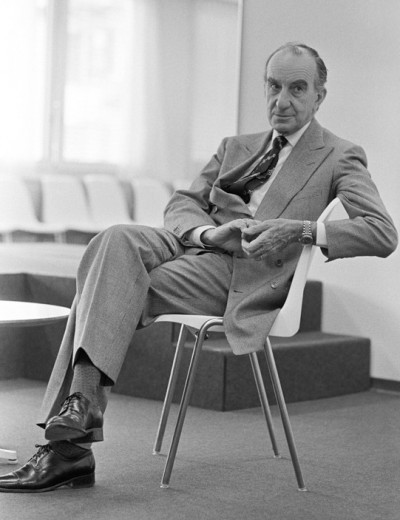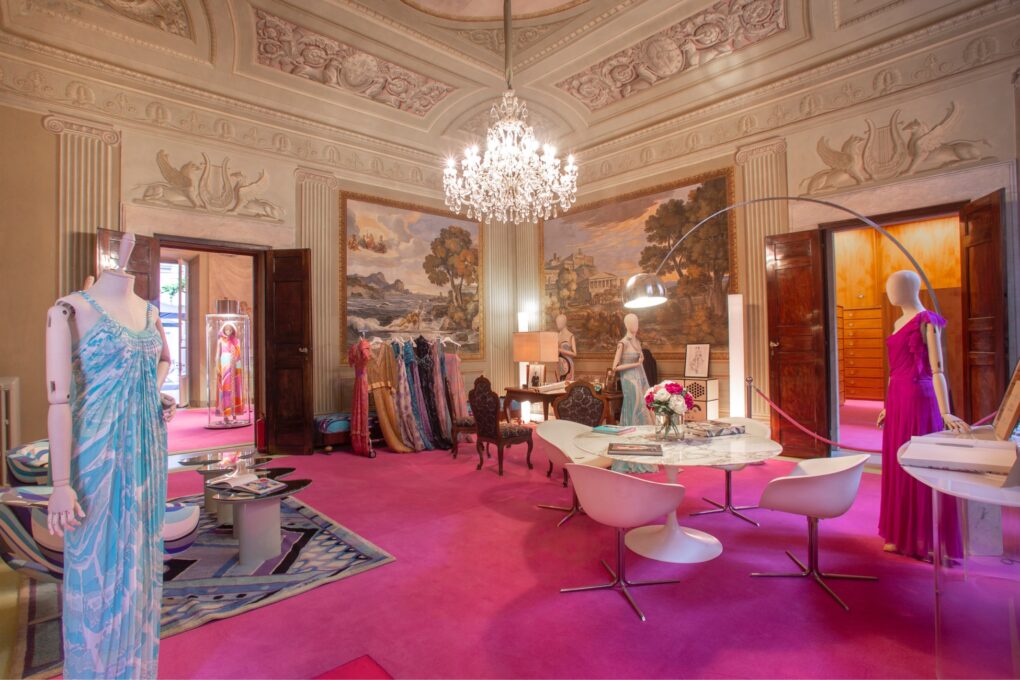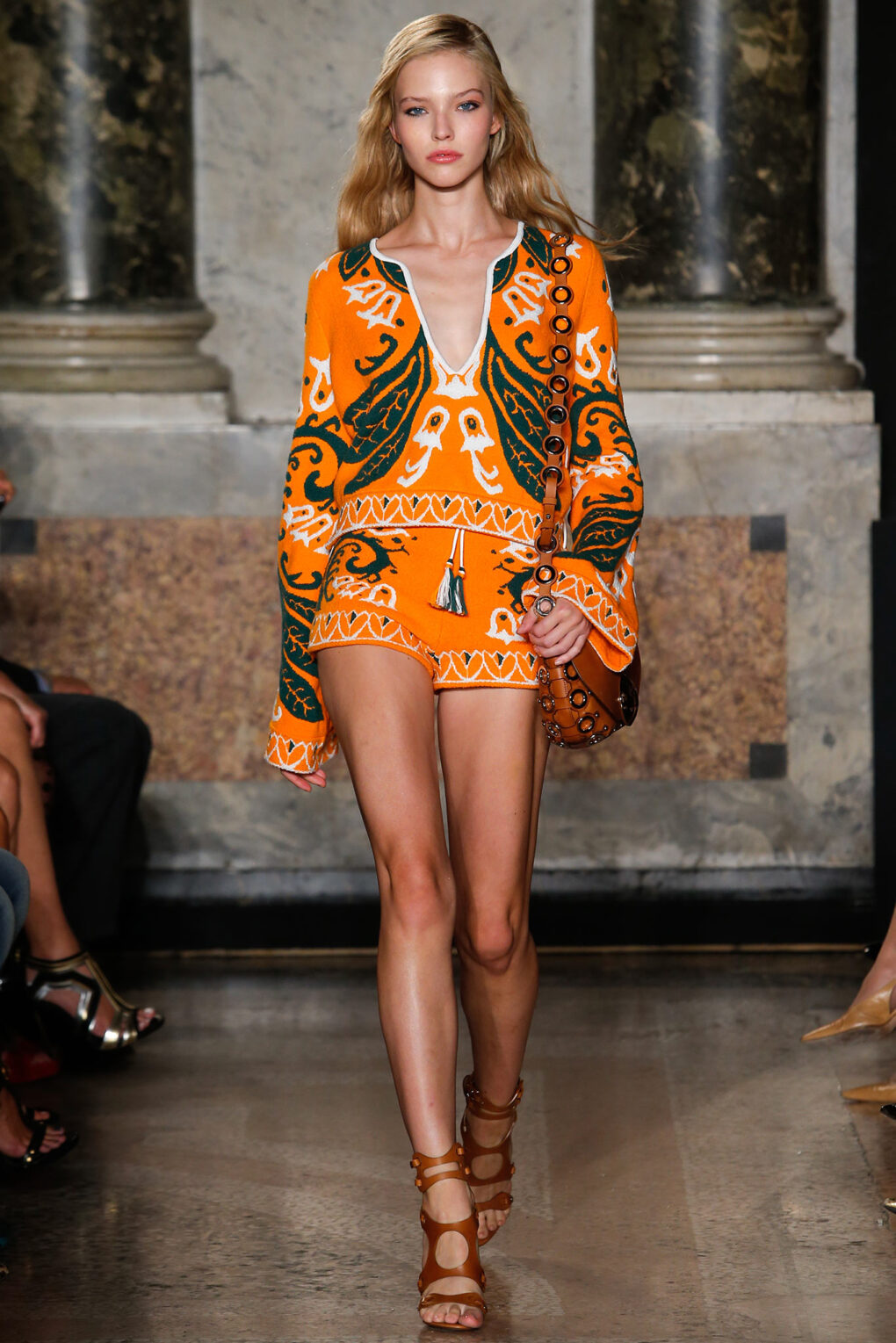
BRIEF ENCOUNTERS
THE ITALIAN FASHION DESIGNER, EMILIO PUCCI
Don Emilio Marchese di Barsento was born in 1914 into one of the oldest noble families of Florence. An Italian fashion designer and politician, he lived and worked for much of his life in the Pucci Palace in Florence. His fashion house became synonymous with distinctive, geometric, brightly colored fabrics in a kaleidoscope of colors.
Pucci began to achieve international recognition in the early 1950s. In the 1960s, Marilyn Monroe became a fan and was famously photographed in a number of Pucci items. After her death in 1962, she was interned wearing a Pucci dress. As the decade progressed Pucci designs were worn by everyone from Sophia Loren to Jackie Kennedy, Madonna to the Australian megastar Kylie Minogue.


Pucci was a keen sportsman who swam, skied, fenced, played tennis and raced cars. An avid equestrian, he died in 1992 following a riding accident, aged 78.
In the 1970s, I was working in New York for IBM’s General Business Group/International division when it was decided to host a three-day conference in the Loews Monte Carlo (now a Fairmont hotel) for the company’s most important customers in Europe, a list of Fortune 100 household names. Attendees were the most senior executives of these blue-chip companies and their wives.
My assignment was to coordinate the program’s business elements that took place each morning and the entertainment during each evening’s banquet. The morning’s speeches given almost exclusively by IBM’s top international executives were routine for me, but the evening’s entertainment was anything but.
One evening’s highlight was a Dionne Warwick concert in the Salle des Etoiles in the Monte Carlo Sporting Club. This celebrated venue on Princess Grace Avenue, which overlooks a harbor packed with multi-millionaires’ yachts, has a huge retractable roof that can be slid back to reveal a night sky of the glimmering stars of a warm Provencal summer.
The other evening featured a fashion show – the upcoming Fall collection of the internationally renowned designer Emilio Pucci who was then at the height of his celebrity.
One workday morning, I was given the designer’s home address and was asked to fly over to Florence to meet him to discuss his part in our conference, of course, but more importantly, I was to check the latest fashions he planned to show to ensure none offended IBM’s ultra-conservative standards.
A day later, I arrived at what was then Amerigo Vespucci airport in Florence, knowing very little about the man I was about to meet. I had never heard of him before being given the assignment and had no idea what to expect. All I had was an address: 1, via Pucci, Firenze.
Looking back, I should have done some research, but the fashion show was just one component of a packed three-day program. I had plenty of other more serious issues on my mind. A fashion show was lightweight entertainment and the least of my concerns, or so I thought.
Pucci’s home address was virtually within the shadow of Santa Maria del Fiore, the magnificent Renaissance cathedral in the center of the city. It’s famously capped by the largest masonry dome in the world that dominates the city skyline and gives the edifice it’s colloquial name Il Duomo.
The airport cab dropped me off in a narrow street fringed down one side by an imposingly high, red-brick wall. I couldn’t see any house beyond it, only an ancient wooden door embedded in it. Next to it, dangled a rusted bellpull. I yanked it and heard a far-off sound like a monastery bell tolling at a funeral.
A few minutes later, a short, gray-haired woman swathed entirely in black swung the door open to reveal a wide stone-flagged courtyard and in the distance a flight of open-sided stone steps pinned to one side of an impressive structure that featured the kind of decorative columns, arches and bared windows seen on Venetian palaces along the Grand Canal.
I followed the old woman as she shuffled slowly across the courtyard, up the steps and through another ancient door into an opulent entrance hall. She waved a hand toward a bench where I was to sit and wait, then left me alone.
I was at one end of the longest corridor I had ever seen, lit by tall windows on one side, and hung with landscape oil paintings and portraits on the other. A distant door opened at its far end. A beautiful young woman emerged and sashayed toward me like the runway model she probably was.
When she arrived, she reached out to shake my hand beaming a wide smile and saying, “The Marquese will see you now. Would you come with me, please?”
As we walked, she told me the designer preferred to be addressed as Marquese (mar-kay-zee), explaining that this was a title dating from the Middle Ages, roughly equivalent to a Duke, that he had inherited along with this palace.
At the end of the corridor, she ushered me into what looked like a Victorian library straight out of an Edgar Allan Poe novel. It had subdued lighting, dark wood paneling, dark antique furniture, somber paintings, and shelves groaning with ancient volumes.
Pucci stood up behind a massive desk, looking every inch the suave, middle-aged, aristocrat he was, wearing pale gray slacks, and an obviously tailored, double-breasted navy-blue blazar with a white shirt and tie. His gray-blue eyes twinkled kindly as he reached out to shake my hand and indicated where I should sit.
When he leaned and bent forward to sit down again, I noticed his thinning dark hair was swept straight back across his head with gel.
Once settled, I said, “I have to tell you Marchese, I’m very impressed that you’re such a well-known fashion designer, they named the street after you.”
“My dear boy,” he replied, “they did that several hundred years ago.” He waved a hand toward a window that offered a glimpse of the 13th century cathedral next door. “Il Duomo is built on Pucci land.” Giving me a moment to allow that news to sink in, he added, “and so is the city’s airport.”
Suitably humbled, I next commented on what I thought was a magnificent, figurative oil painting hanging in a massive gilt frame behind where he sat.
“Oh that,” he said. “There’s a story behind that.” He reached up to take down an empty wine bottle from a nearby shelf. “Look through the back of that,” he instructed, “and you’ll see a legend written on the back of the label.”
I turned the bottle around and peered through it, trying to make out the text through the thick glass, but it was hard to read clearly.
The Marchese spoke again. Educated in both Italy and the United States, where he studied agriculture at the University of Georgia, his English was fluent and without any particularly noticeable accent.
. “It says the family once owned vineyards north of here near the village of Vinci,” he explained. “Very remote, not much out there then, just a few small farms and villages. One day, one of my ancestors sold a few bottle of wine to a local artist in exchange for a painting, that painting. You have good taste, my boy. That artist was Leonardo da Vinci.”
I decided it was time to get onto more familiar ground. “I think you know why I’m here, sir,” I started.
“Yes, of course, you’re here to see my Fall collection. But I must tell you, I have very little to show you right now. This is the spring. Your event is months away. I’ve barely started on my next collection. But I can tell you what I’ve been thinking.
“I thought I’d show what a sophisticated young socialite might wear throughout a day in a glamorous playground like Monte Carlo. I’ll show what she might wear to lunch, on the beach or around the pool, then go to cocktail dresses and evening gowns.
“But let me show you what I do have so far.” We got up and moved to a small room next door and sat down again. He clapped his hands loudly. A shapely, coffee-colored model stepped into the room wearing nothing more than a coffee-colored cape draped around her shoulders. She paced to and fro then with a smile and a flourish opened the cape wide to reveal a skimpy, coffee-colored bikini beneath. I gasped. Given her matching skin tone, the whole ensemble made her look naked.
I was in trouble. How could I tell this to one of the world’s most prominent designers without sounding like an old-fashioned prude? Well, that’s why I was here, I told myself.
A few more acceptable outfits followed, but no evening dresses. He explained why. “Well, first nothing is ready yet. But you must also understand my evening gowns are very costly, at least $25,000 or more, and my models must change very fast during a fashion show. I don’t want to risk any damage: zips sticking, fabric being torn or ripped, or anything else that might happen in haste, during a rehearsal. So, you won’t see them until the actual night.”
Later as I was leaving, I assured him everything was OK, except for that cape and bikini. They really had to go. He didn’t like it or understand, but he accepted it.
A few days later back in New York, I told my boss how well the visit had gone, carefully leaving out the bit about the evening gowns.
Time went by, then Pucci invited me to visit him in New York. He asked if I would help him craft the remarks he had drafted to introduce the show. We met in his spacious apartment in the super chic Sherry-Netherland building overlooking Central Park where we happily continued what was to become a long and warm friendship.
I went home that evening to work on the choreography and music for the show, something I had never done before. I listened to album after album from my music collection moving like a model pacing up and down in our living room for my wife, until I settled on a few tracks I thought worked.

A few months later, I met Pucci again on site in Monte Carlo to rehearse the show. I had planned that after his introduction, all the lights in the ballroom would go out. In total darkness, only a single beam of light would be used to focus on the first model when she appeared on stage, motionless at first. Then, footlights along the edges of both sides of the T-shaped runway would illuminate one-by-one as she walked past. At the end, she was to spin a couple of times in front of the VIP top table, walk down the left arm of the T, then down the other side, then slowly walk back down the middle as the next model appeared to make her moves.
During the rehearsal, all the models wore jeans and T-shirts, not the gowns that were to be shown. Again, the Marchese explained why doing otherwise was impractical and time-consuming.
On the night of the big event, the ballroom was crowded with several hundred executives and their wives. Looking very sophisticated in a custom tuxedo, Pucci gave a speech describing the evolution of today’s fashion. When he ended with the introduction to the evening’s show, the lights went out as planned and the ballroom was suddenly black.
I was sitting at a table alone in the corner of the ballroom “calling the show,” meaning I was wearing a headset hooked up to a closed-circuit system and was calling all the production’s cues to the technical crew and backstage handlers, following the annotated script, which I’d written and we all now shared.
Forty-five minutes later, almost all the outfits had been shown, except for a grand finale outfit. All the lights went out on cue, and I called for a single spotlight to illuminate the final model.
She stood center-stage, motionless for a moment while her eyes adjusted to the dark. My stomach did a somersault. I noticed immediately she was wearing an evening gown I had never seen before. It was gorgeous but it had a neckline that plunged deeply between her breasts to her waistline where it flared into disconnected panels hanging straight down to her ankles.
I had been told that models wear nothing more than a nude body stocking under their clothes to avoid any risk of ugly bra straps or panty lines being seen. Suddenly, I was getting worried….
Sure enough, as the lovely model set off down the runway confidently swinging in time to the music, the panels forming the lower part of the gown opened wide with each stride, revealing a generous view of perfectly shaped leg from ankle to waist, to the delight of the men seated at the banquet tables either side of the runway with their heads level with her thighs.
To make matters worse -- for me anyway -- as instructed, she then spun a full circle at the end of the runway in front of the most important VIP table in the entire room. In rehearsals, she was wearing jeans and a T-shirt. Now as she spun, the individual panels of her dress flew up like helicopter blades unintentionally mooning the VIPs with a closeup display of her flesh-colored body stocking butt. At the same time, her twirling movement caused one naked breast to slip out of her decolletage just as the music reached a crescendo.
This was a disaster! I sunk my head in my hands.
All the lights came on signaling the end of the show. The entire audience jumped to its feet giving a thundering ovation. But I knew I had failed. I’d been dispatched all the way to Florence to ensure this sort of thing wouldn’t happen. I was sure I’d be fired.
Pucci was backstage with the models as the ballroom emptied. I stayed where I was, staring at my notes in a daze. A few minutes later, I looked up and saw my boss weaving between the empty tables toward me. Here it comes, I thought.
“Frank wants to see you and Pucci in his suite, right now,” he snapped, referring to the chief executive of IBM’s international division. He spun on his heel and left me without another word.
I leapt up and went in search of the Marchese. We barely spoke in the elevator up to the top floor of the hotel. I could see he was already drained and now sensed that he too had somehow failed. I put my arm around his shoulders to reassure him, feeling his nervous energy burning through his damp jacket.
When we entered the President’s suite, we saw Frank sitting around a table drinking Scotch with four of Europe’s top CEOs. He immediately jumped up. “Congratulations!” he said to both of us, beaming wide and shaking our hands. “That was excellent!” He nodded at the others who began to clap. “We want you to repeat the show in Bangkok next month.” I almost passed out with relief.
We did repeat the show in Bangkok. We had more adventures there and bonded even more. So much so, at the end of our short tour together, Pucci offered me an apartment in his palace plus a handsome salary to work for him staging fashion shows all over the world. But that was not to be.
